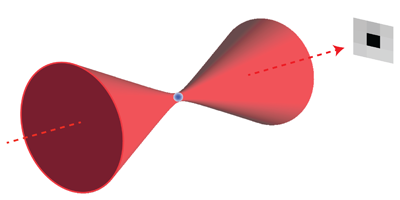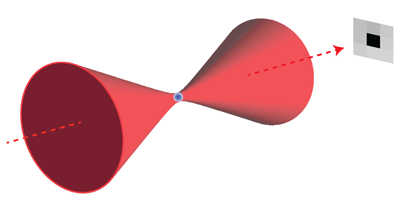Cooling Neutral Atoms in Optical Tweezers
To probe the quantum-mechanical world, and perhaps someday to exploit it for ultrapowerful computing, experimenters must isolate and control individual quantum systems. Isolated ions are easy to trap, but another promising candidate is a single neutral atom, which is less sensitive to nearby stray electric fields. In work reported in Physical Review X, Adam Kaufman and co-workers at JILA and the University of Colorado, both in Boulder, demonstrated that an atom held by a tightly focused laser beam known as optical tweezers can be effectively laser cooled into its quantum ground state, where its quantum nature is most clearly exposed and manipulated.
The insensitivity of a neutral atom to external fields unfortunately makes it hard to confine it tightly in the type of electromagnetic trap that is used for ions. Such tight confinement creates large energy separations between different vibrational modes of an ion, making it relatively easy to cool its motions into the lowest-energy state. In an established scheme known as Raman-sideband cooling, for example, one pair of lasers is tuned so that it is absorbed mostly by ions that are vibrationally excited, and then another laser returns them to a less-excited state. Kaufman and his colleagues showed that properly configured optical tweezers can hold a neutral atom tightly enough to be cooled in the same way, so that a trapped rubidium atom was placed in its ground state with a probability. In the future, tweezers could move a trapped atom around to allow controlled quantum interactions with other atoms or with an external circuit. – Don Monroe





